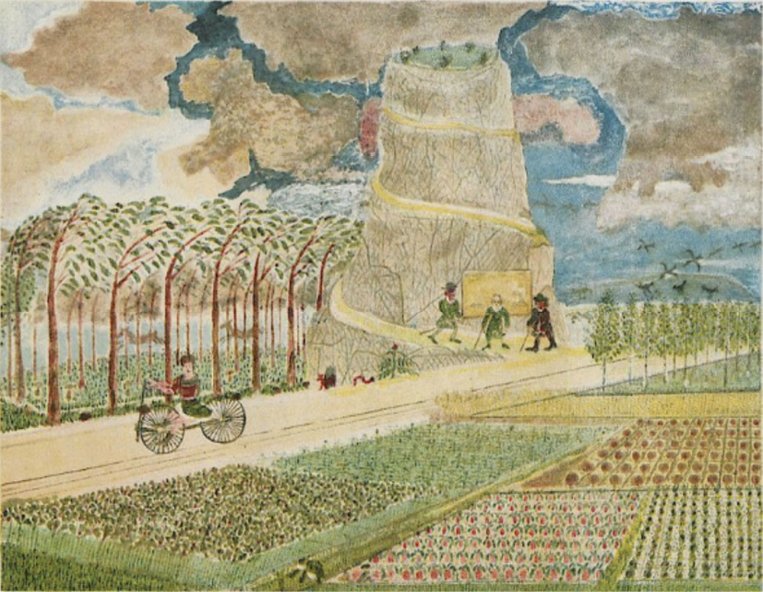productive symptoms. This treatment requires more effort to place them back into social and work life, and into friendly and loving relationships. Schizophrenics are lost in eccentric ideals (verstiegene Idealbildung), in twisted thoughts (Verschrobenheit) and throughout their life, their life conduct tends to twist and turn about in a chronic introspection (it is noticeable that they look frequently at themselves for hours in the mirror, as if searching for themselves), in repetitions and freezes (fixed and delusional ideas maintained identical for years) and in constant dwelling on how something is done rather than on what had been done, in a way that lacks experiential content supporting it. These characteristics of the schizophrenic way of existence make it easier to understand its vicinity to mannerism. Goethe himself has alluded to this feature, in a remark

regarding shortcomings of Roman architecture when compared with classical Greek architecture. He writes:
Only now do I feel how justifiably all arbitrariness [of functional architecture] has been detestable to me...Now all of it stands there stillborn, for what does not have a true, inner existence has no life and cannot be great or become great.32
The tragic existential condition of people with schizophrenia lies in the fact that they, in their desperate search for themselves, find only emptiness, since the self is never really in one identity, but in an other one. And this is dramatically reflected in their artistic productivity, that shows how that interior emptiness is transformed into an obsession with filling every possible external space; how the incapacity or rather the fear to deeply feel (associated, as it is known, with the coldness of the mother or with a home destroyed early) appears in their pictures as the total absence of perspective and how, finally, the difficulty they face to accept the dialectic condition of existence is reflected in their work through infinite unnecessary details, that are mere graphic pyrotechnics, pure artifice, in summary, empty and abandoned labyrinths, without Minotaurs posing a real (instinctive, for example) threat, nor Theseus saving, with the help of love, all who are trapped in the labyrinth and allowing
32 Johann Wolfgang Goethe, "Terni, den 27. Oktober, abends," in Italienische Reise. Auch ich in Arkadien, Berlin, DE: Holzinger 2013, p. 94, http://www.zeno.org/Lesesaal/N/9781484072868?page=94&ps=%21, transl. Existenz editors.
Figure 16: Interruption of perspective by a tower, garden with labyrinthine elements:"Der Wackelfels" (water color) 33 x 21 cm (slide 29).33
